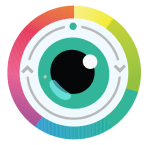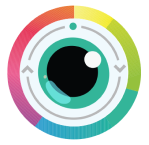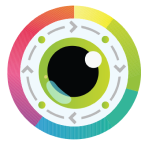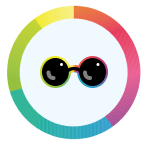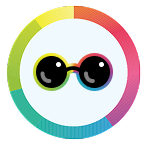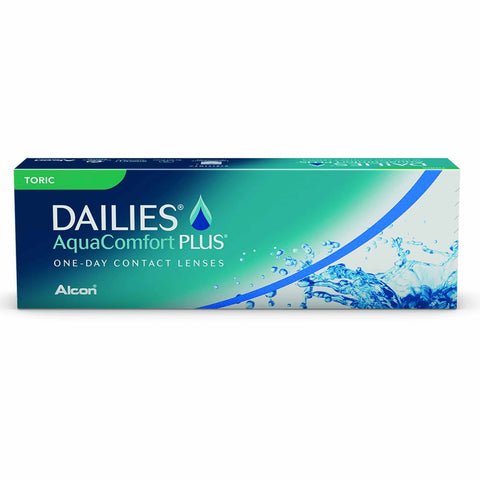
A question that frequently arises, especially among those new to vision correction or considering a switch between modalities, is: Is your contact prescription the same as your glasses?
While both glasses and contacts are designed with the primary goal of enhancing your visual experience, the mechanics of how they achieve this are distinct.
Let's uncover the details.
What this article covers:- Difference Between Contact and Glasses Prescriptions
- Can a Glasses Prescription Be Converted to Contacts?
Difference Between Contact and Glasses Prescriptions
Our research indicates that the difference in glasses and contact prescription lies in design, positioning relative to the eye, and the specific measurements that each considers.
Let's break down these distinctions.
Understanding Glasses Prescription
A glasses prescription factors in the distance between the eye and the lens, which sits approximately 12 millimeters away. The primary components of a glasses prescription include:
Sphere (SPH)
Measured in diopters (D), the SPH indicates the lens power needed for vision correction.
A minus sign (−) signifies nearsightedness (clear close vision, blurry distance vision), whereas a plus sign (+) denotes farsightedness (clear distant vision, blurry close-up vision).
Cylinder (CYL)
These components correct astigmatism. The CYL specifies the lens power required, with a minus or plus sign indicating nearsighted or farsighted astigmatism, respectively.
Axis
The Axis, a number between 1 and 180, defines the orientation of astigmatism.

Add Power (ADD)
Found in bifocal or multifocal prescriptions, ADD represents the extra magnifying power, always in "plus", needed for close-up tasks like reading.
It addresses presbyopia, an age-related focus issue.
With the rise of various contact lenses brands, options like daily contacts, transitions contacts, and colored contacts have increasingly catered to diverse needs and lifestyles.
Understanding Contact Lenses Prescription
Contacts, on the other hand, sit directly on the eye's surface. Our findings show that their prescription considers:
Base Curve (BC)
Representing the back surface curvature of the contact lens, the BC is measured in millimeters (mm).
A smaller number indicates a steeper curve for more curved corneas, while a larger number suggests a flatter curve suitable for less curved corneas.
Diameter (DIA)
Measured across the contact lens in millimeters (mm), the Diameter determines the lens size and its coverage of the cornea.
Proper sizing ensures the lens covers the cornea without overextending.
Power or Sphere
Quantified in diopters (D), the Power denotes the lens strength for vision correction. Positive values correct farsightedness (clear distant vision), while negative values address nearsightedness (clear close-up vision).
Can a Glasses Prescription Be Converted to Contacts?
While they are closely related, directly using a glasses prescription for contacts isn't advisable. Based on our observations, glasses are typically positioned about 12 millimeters from the eye, whereas contact dailies and other types of lenses sit directly on the eye's surface.
Astigmatism, for example, is a condition where the eye doesn't focus light evenly. This is due to an irregularly shaped cornea or lens, which is addressed in glasses prescriptions with cylinder and axis values.
In light of this, some people might need specialized lenses, which consider additional measurements not present in standard glasses prescriptions.
The precise fit of Infuse contact lenses and others is paramount for comfort and eye health. Unlike glasses, contact lenses must conform to the eye's exact shape and size. This necessitates specific measurements, such as the Base Curve (BC) for lens curvature and Diameter (DIA) for lens size.
Using a glasses prescription without these measurements can lead to ill-fitting lenses, resulting in discomfort and potential eye health complications.
For those wondering if can you wear non prescription colored contacts with glasses, the answer is yes; you can enhance your eye color with contacts while relying on glasses for vision correction.
Conclusion
In the intricate realm of vision correction, the distinctions between glasses and contact lens prescriptions play a pivotal role. From understanding the specific abbreviations on your prescription to recognizing the unique measurements required for each optical aid, being informed is key.
Curious about what we have in store? Shop at Fresh Lens for all your contact lens needs!
If you want to learn more, why not check out these articles below:
- Is It Safe to Wear Colored Contacts Over Prescription Contacts
- Can You Wear Contacts and Prescription Sunglasses at the Same Time
- Can I Order a Different Brand of Contact Lenses Than My Doctor Prescribed
- How To Read Your Contact Lens Prescription
- How to Remove Contact Lenses
- How to Remove Contact Lenses with Long Nails
- How to Take Out Contacts Without Touching Your Eye
- How Much Are Contact Lenses?
- Best Place to Buy Contact Lenses
- Can You Return Contact Lenses?
- Best Contact Lens Solution
- Can I Leave My Contact Lenses Without Solution?
- Does Contact Solution Help with Red Eyes?
- Does Contact Lens Solution Expire?
- How Long Can Contact Lenses Stay in Solution?
